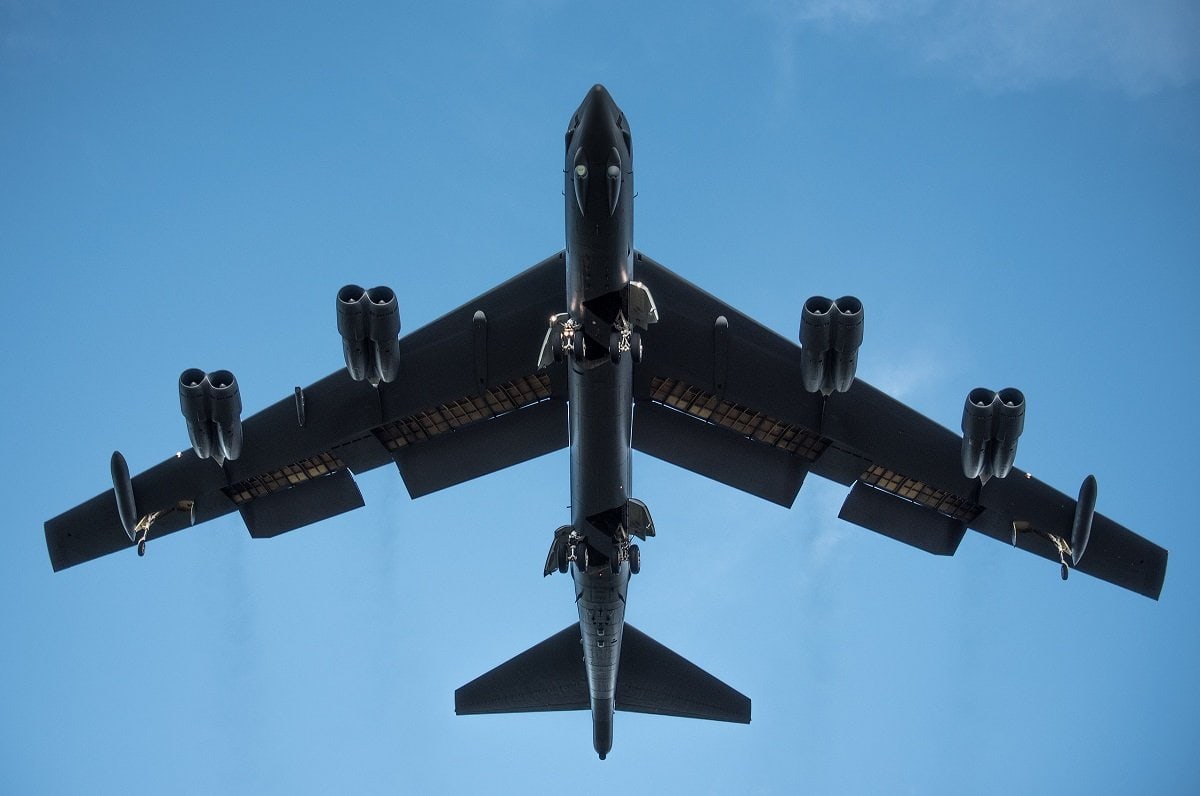Two Boeing B-52 Stratofortress bombers made a long-haul flight from the American Midwest this month to aid in efforts to secure efforts to bring U.S. troops home from the Middle East.
The Air Force announced two of the Cold War era bombs from the 5th Bomb Wing, Minot Air Force Base (AFB), North Dakota were deployed to Al Udeid Air Base, Qatar last Friday.
The bombers are the first two in the group that have been deployed to the U.S. Central Command (CENTCOM) region to protect U.S. and coalition forces during the drawdown operations from Afghanistan. The bombers are being accompanied by support Airmen from the 5th Bomb Wing. Minot AFB is one of two military installations in the U.S. that is home to the B-52 bomber, with the other being Barksdale AFB in Louisiana.
The United States Air Force maintains a fleet of fifty-eight B-52H bombers in active service, while eighteen more remain in reserve. Thanks to a steady stream of updates, the bomber will be taking to flying until the 2040s or later. By the time the B-52 is finally retired, the great-grandchildren of the original pilots who first took flight in the B-52 could be behind the controls of the final aircraft to take to the skies.
The first B-52s entered service in June 1955, and by the time production of the Stratofortress ended in 1962 a total of 744 had been built.
Supporting Drawdown Operations
It was announced that U.S. Central Command would provide the necessary force protection to ensure the drawdown can be conducted in a safe and orderly manner.
“That means giving the commander on the ground, Gen. [Austin] Miller options,” Pentagon Press Secretary John Kirby said during a press conference Friday. “Options to make sure that our forces and our troops, and those of our allies are protected as they move out of the country. And things like bombers provide you options.”
Kirby also told reporters that Secretary of Defense Lloyd Austin had extended the deployment of the USS Dwight D. Eisenhower (CVN-69) to the region during the drawdown.
The New York Times also reported on Sunday that U.S. Army General Austin Miller said that the U.S. has formally begun its withdrawal from Afghanistan. During a press conference in Kabul, the top commander of U.S. and NATO forces in the country said that the U.S. would begin “transitioning bases and equipment to the Afghan security forces.”
Earlier in April, President Joe Biden announced the United States will withdraw all forces from Afghanistan by Sept. 11, which will mark the twenty-year anniversary of the 9/11 terror attacks. It was in October of 2001 that U.S. forces began their invasion of Afghanistan.
However, it was just last week that CENTCOM Commander Kenneth McKenzie warned that intra-Afghan peace talks have stalled and remain in a “short-term deadlock,” adding that there remains the need for the United States to continue to support the Afghan government. There is a very real possibility that the Afghan government could collapse after foreign forces withdraw.
Al-Qaeda could pose a threat to remaining U.S. personnel during the drawdown according to a Department of Defense (DoD) report to Congress entitled, “Enhancing Security and Stability in Afghanistan.”
The report, which was published on Friday, noted “The United States remains committed to helping Afghans create a secure and stable Afghanistan by supporting inclusive efforts to achieve peace. The best path to a lasting peace in Afghanistan is a negotiated political settlement among Afghans.”
Peter Suciu is a Michigan-based writer who has contributed to more than four dozen magazines, newspapers and websites. He regularly writes about military small arms, and is the author of several books on military headgear including A Gallery of Military Headdress, which is available on Amazon.com.

